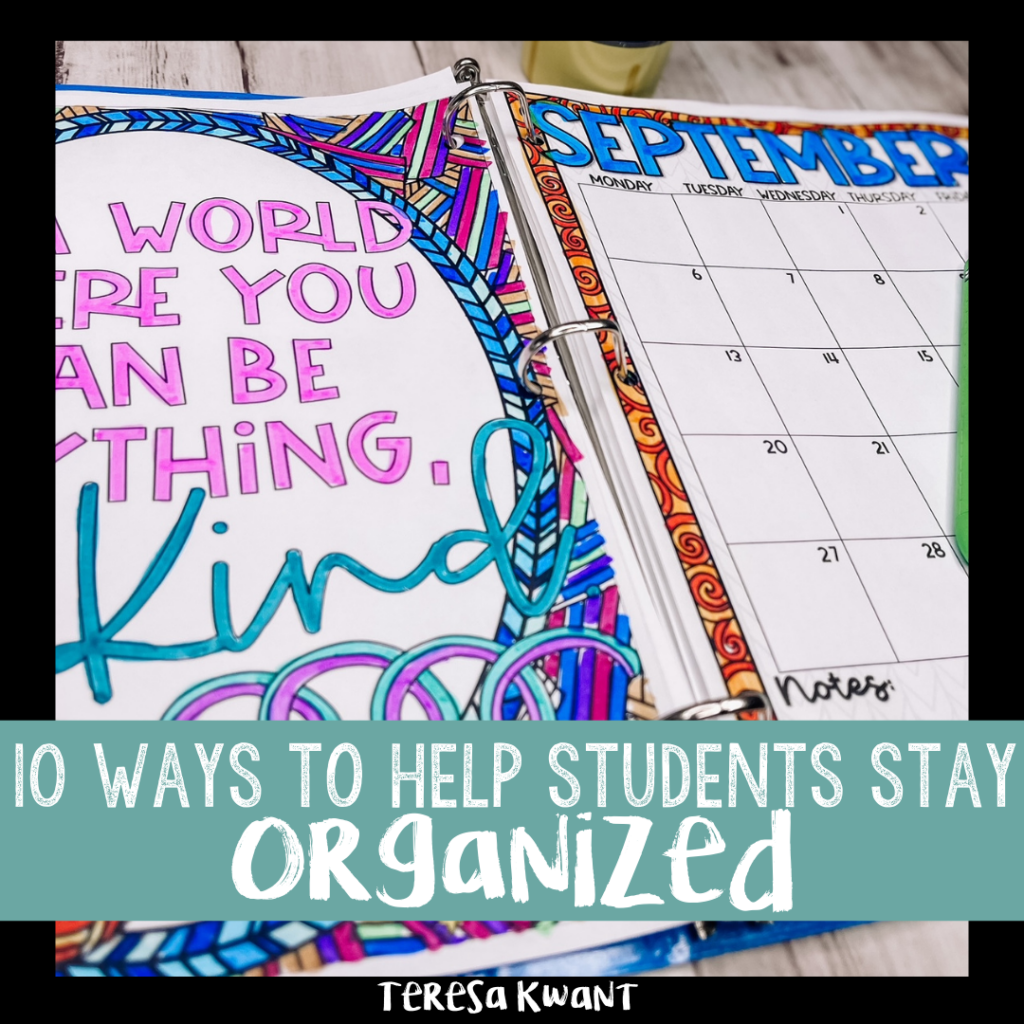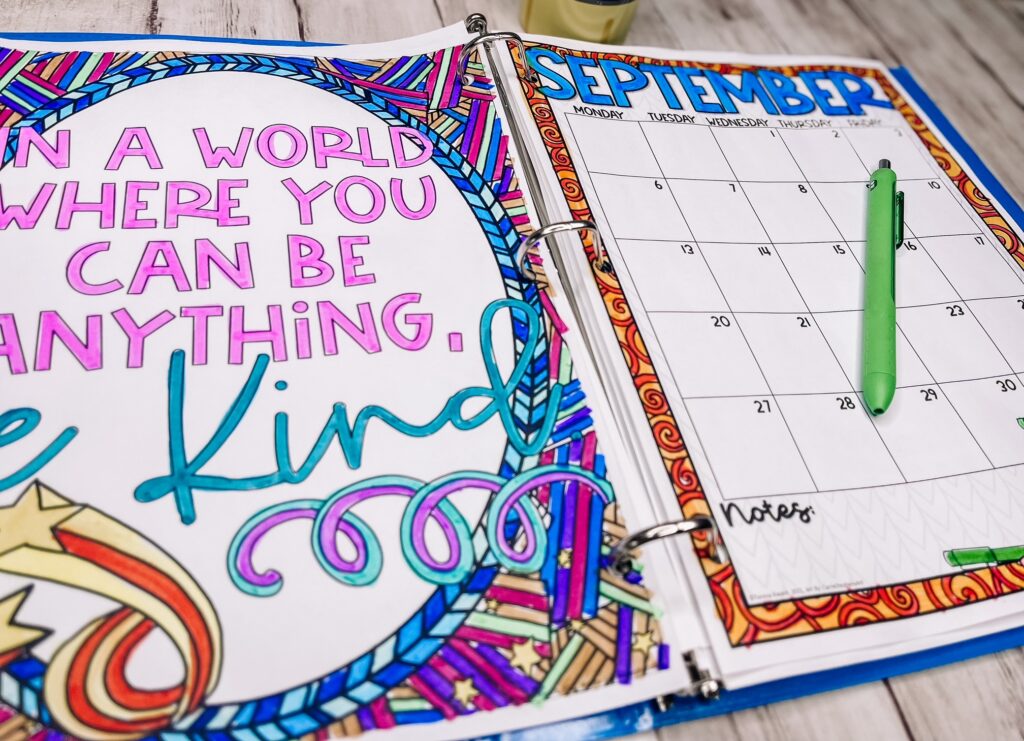
When starting a new school year, educators know how important it is to be prepared and begin relationships with students on the right foot. We greet, we meet, and we are sweet. However, setting students up for success during the school year has components we may not always have in mind.
Organization is a very important aspect of student success. It may not seem like a primary skill, but students without are put in a position to be less successful academically. Research shows that there is a correlation between organization and student achievements in school. However, organization involves more than physical material placement. To support students in their academic journey, we must also teach students how to organize their thoughts, learning and direction following. There are several ways to keep students organized throughout the school year. Implementing these strategies may just be the extra push students need to begin the year with their best foot forward.
Teachers have much to prepare for before students arrive in their classrooms. One worthwhile preparation is to organize our thinking. What will our first day look like and sound like? What are the most important things to do, and which things aren’t as imperative? One aspect that needs consideration is how supplies will be organized. Below are several things teachers can do to streamline the process.
When prepared teachers encounter their first day with students, they make sure a system is in place for supply labelling. This may look different for young students compared to those in higher grade levels, but labelling is an incredibly important ingredient in our recipe for student organizational success.
Student binders should be labelled and taken back and forth to school each day. These binders can include homework, school handouts, communications between teachers and parents, and student planners. Depending on their purpose, binders and planners can look different. Assignments could be written daily, upcoming important dates can be recorded, goals can be set, progress can be charted, and more. Check out this planner template (Doodle Planner Link)! Not only does it provide space for various uses, but it is all in one bundle, supporting students in their work for staying organized.


As the school year begins, teachers must not forget that their example is incredibly important and sets the bar for students. This is true for behavior, academic prowess and also organization. Model organization on your own desk. If students see their teacher’s messy pile of papers, they are likely to be okay with the mess upon their table tops.
Classroom procedures and expectations are always on the list for first week necessities, but organizational routines should also be on that page. Each routine must be taught, including a procedure for supply preparedness. Teachers should always list supplies needed for the subject to come and instruct students on how that should look and sound.
Different systems work better for different teachers, but it is always important to set up expectations for supply storage. Teachers must teach the importance of putting supplies away to create organized learning spaces. There are many options for this which may include seatback pockets, book tubs, student drawers, hanging files and more. Whatever system is used, it must be fully understood and modeled for students in order to successful.
No matter how prepared a teacher may be, issues with organization could arise unexpectedly. Take note of which students need organizational support and provide it as needed. Students could also help one another in their effort to keep everyone best prepared for organizational success.
Spring cleaning simply is not enough for students in the classroom. At least once every quarter, consider guiding students in a deep clean. If desks are used, have students pull everything out, pitch old papers and put those still being used in the appropriate folders. Those with seatback pockets, drawers and hanging files may benefit from the same process.
– If students have cubbies or lockers, getting rid of trash, papers and more will help students get back on track organizationally. Locker clean outs are especially important before long breaks. Make sure no food is left inside to keep ants from welcoming students back after breaks. Again, partner support is a great option as well.
At times teachers are the one of few, or the only, adult that supports students in personal growth. Organization is a life skill that also applies to life outside the classroom. Teaching students how to prepare for each school day is a valuable part of personal organization.
This saying isn’t completely correct, but its intention is timeless. We must provide opportunities for students to practice our procedures and show off their organizational skills. Practicing regularly, and as needed, sets students up for success. Remind students that everyone can be organized, even if it doesn’t come naturally. Stay positive and make sure they understand the purpose.
At the end of the day, teachers only have so much time and so much energy. Working smarter, not harder includes organizational habits. Setting up the expectations at the beginning of the year is helpful and the upkeep throughout the year is imperative. To help the value of this truly sink in for students, lead them to the connections the skill has in the real world. Organized people have a better chance for success in all areas of their lives. So, teachers are wise to keep this in mind while providing the best education possible for all students; those organizationally inclined, and those that need a little push in that direction.